Summary
The Douglas DC-9 emerged in the mid-1960s as the latest in a wave of new short- to medium-haul airliners as the jet aircraft industry was taking off.
Featuring rear-mounted engines and a T-tail configuration, it emerged at the same time as similarly-designed contemporaries like the Hawker Siddeley HS.121 Trident, the Sud Aviation SE.210 Caravelle, the British Aircraft Corporation One-Eleven, the Boeing 727, and the Tupolev Tu-134.
With so much competition, manufacturers were eager to capture large orders from airline customers all over the world.
While the DC-9 was popular with trunk carriers in the United States, it was also ordered by quite a number of European airlines for their regional routes.
These airlines included:
Aeromediterranea
A domestic subsidiary of Alitalia, Aeromediterranea flew Douglas DC-9-32 aircraft lease from the parent company between 1981-1985, when it was merged into ATI (see below).
Alitalia
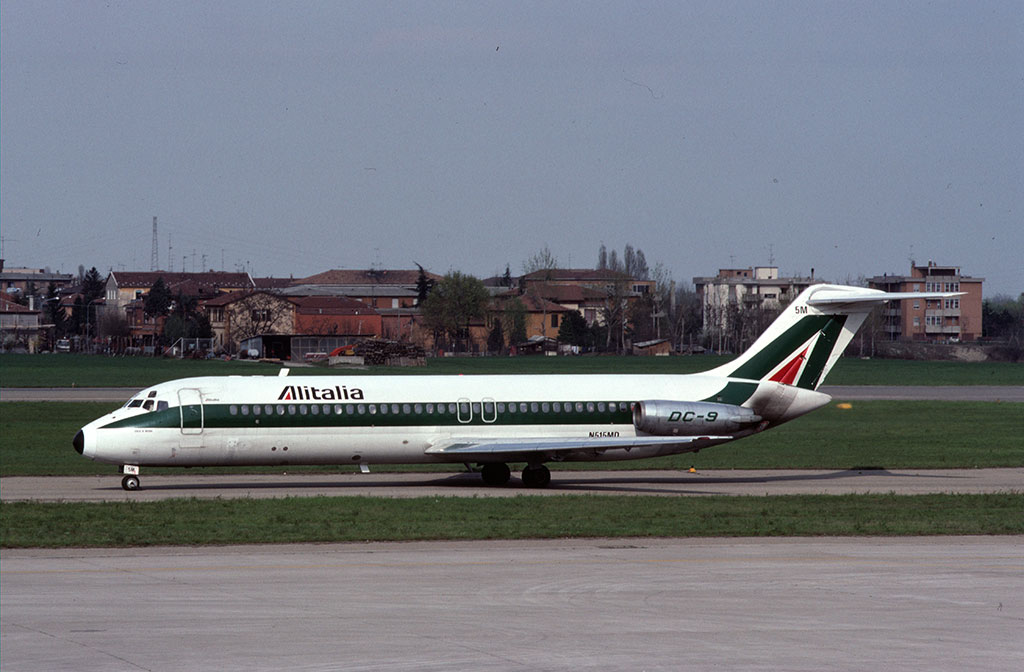
The Italian national airline used the DC-9 extensively, starting with the first -30 examples in 1967, and flying them all the way through to 1996. It would also be known for its large McDonnell Douglas MD-80 fleet.
ATI – Aero Transport Italiani
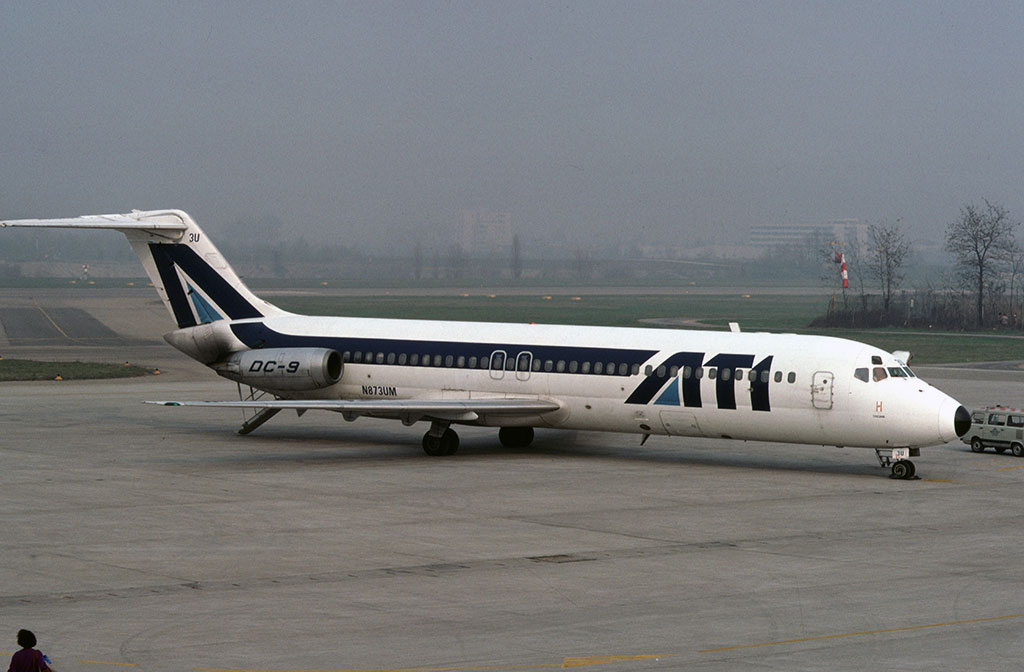
A subsidiary of Alitalia, ATI flew 30 DC-9-32s between 1969 and 1994 when the airline merged into the national carrier. These aircraft flew with a similar livery to Alitalia, albeit in blue rather than green. The aircraft were used on domestic and leisure routes.
Austrian Airlines
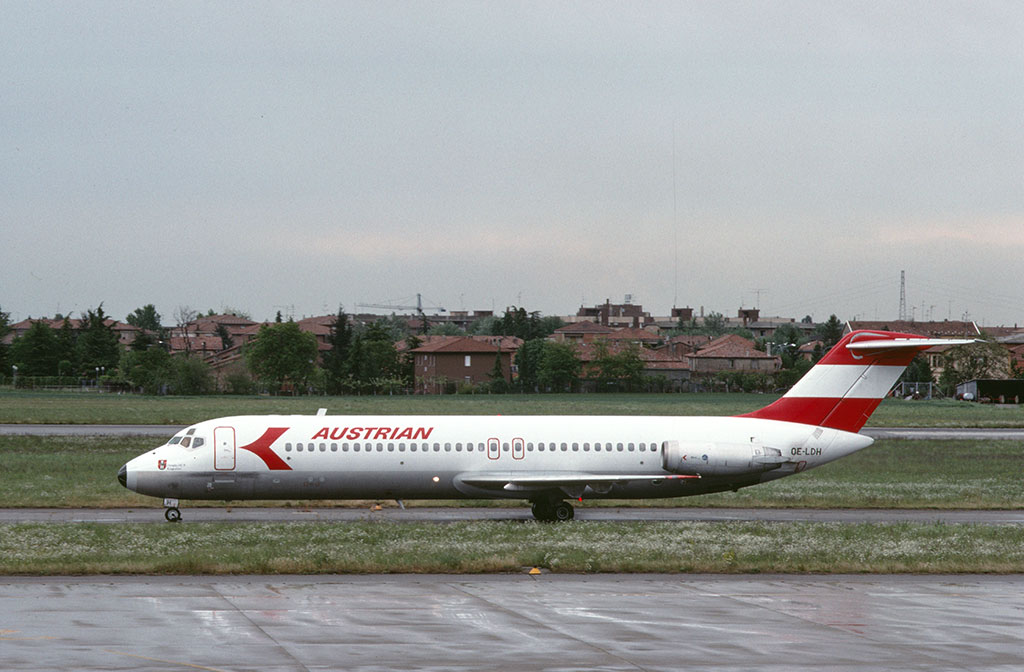
The Austrian national carrier ordered the Douglas DC-9-32 and -51 for its regional and European services, flying them between 1971 and 1985. It also flew the larger MD-80 series, but ultimately moved on to the Airbus A320 family through the 1990s.
Aviaco
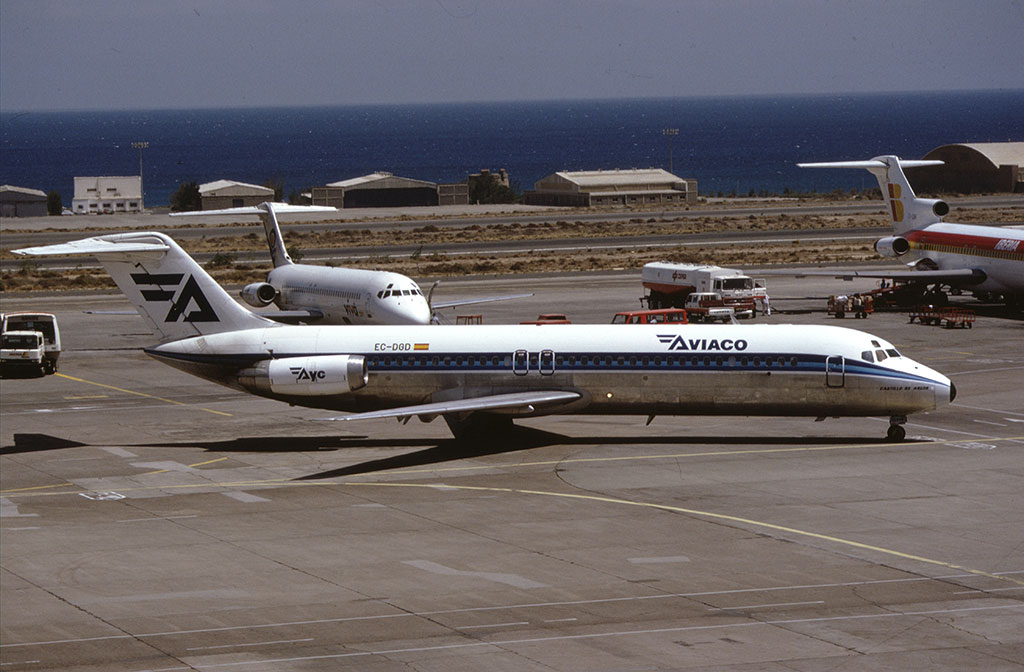
A Spanish charter airline, Aviaco had a wild and varied fleet over the course of its history, before it was merged into Iberia in 1999. It flew DC-9-30s (including two -33CF freighters) from 1978 until its demise, with 20 at one point.
British Midland Airways
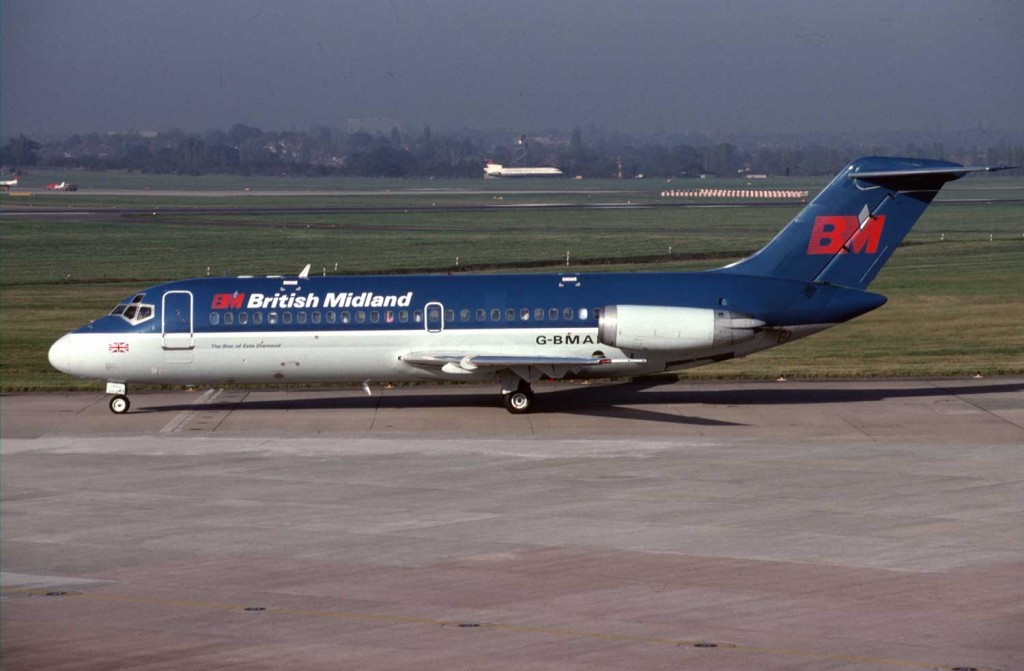
The only airline in the UK to operate the DC-9 (although some flew the McDonnell Douglas MD-80 series). British Midland was a major competitor to British Airways on domestic and European routes and introduced its first DC-9-15 in 1978. In all it flew 18 DC-9-14/-15 and -32 aircraft until they were retired in 1996.
Finnair
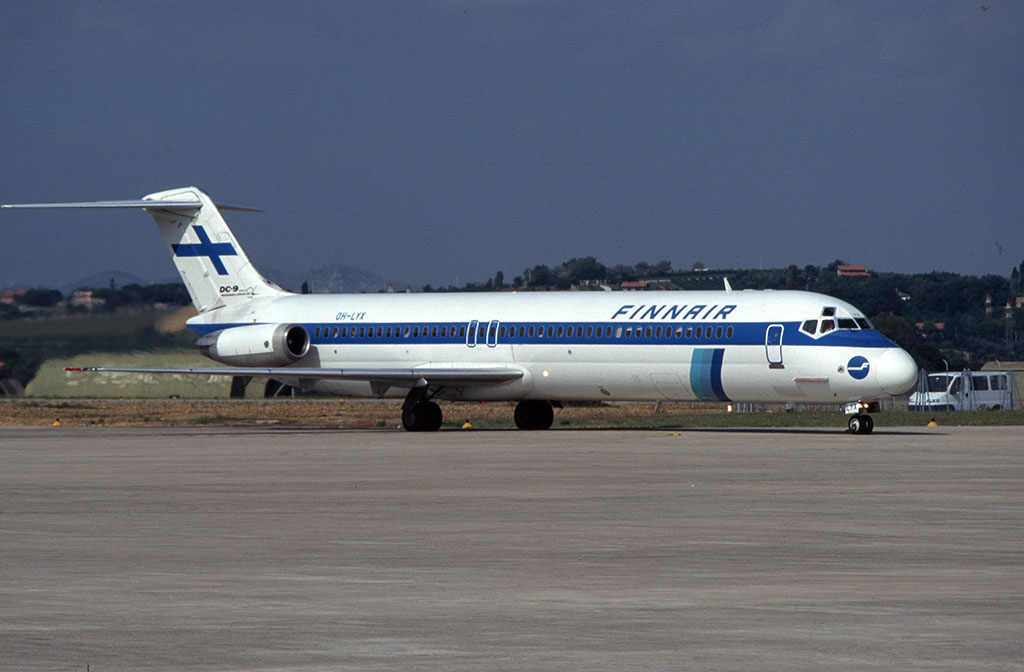
Finnair used the DC-9-14, -15, -41 and -51 to cover a range of duties, from domestic services to European routes, on both scheduled and leisure services. The first aircraft arrived in 1971 and the last -51 left in 2003. Like many airlines, it also flew the MD-80 series alongside.
Iberia
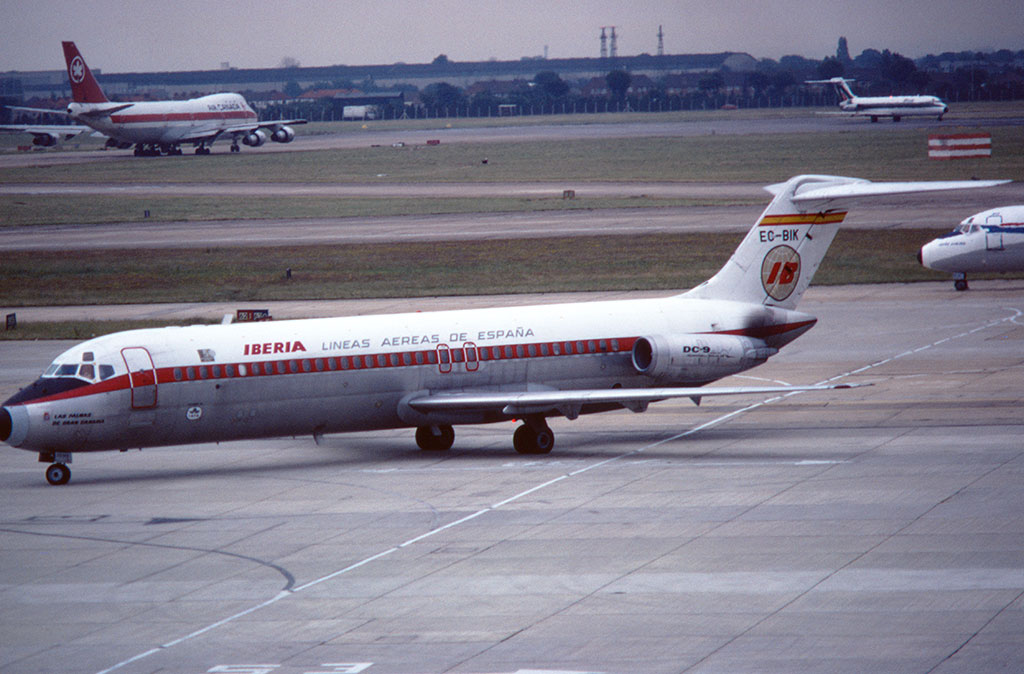
The Spanish national airline flew the DC-9 on domestic and European routes alongside its large Boeing 727 fleet from 1967 until 2001. One example is preserved outside the terminal building at Madrid Barajas Airport, and another at Malaga Airport.
[Where to See a DC-9 in Europe]
Inex-Adria Airways
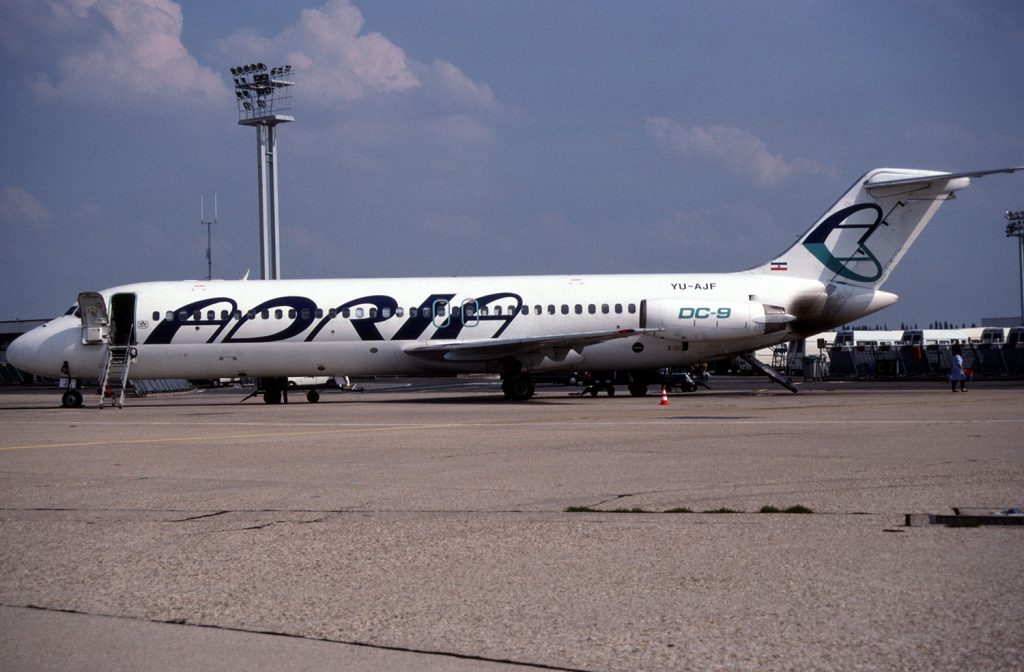
The forerunner to Adria Airways, Inex-Adria was a Yugoslavian (and later Slovenian) airline which used DC-9-30 and -50, and MD-80 series aircraft through the 1970s and 80s, mostly on charter services. It also introduced scheduled services.
The airline changed its name to Adria Airways in the late 1980s and some of the DC-9s were retained for a while, before the Airbus A320 replaced them.
Itavia
A private Italian airline which flew mostly domestic routes, Itavia became synonymous with the DC-9 thanks to a fatal air crash. Itavia flight 870 was brought down in the Tyrrhenian Sea on 27 June 1980, killing all 81 people aboard. With no conclusive cause, it has become a case for conspiracy theorists ever since.
Itavia flew DC-9-15, -21, -30 and -51 models from 1971 until 1981.
Jat Airways
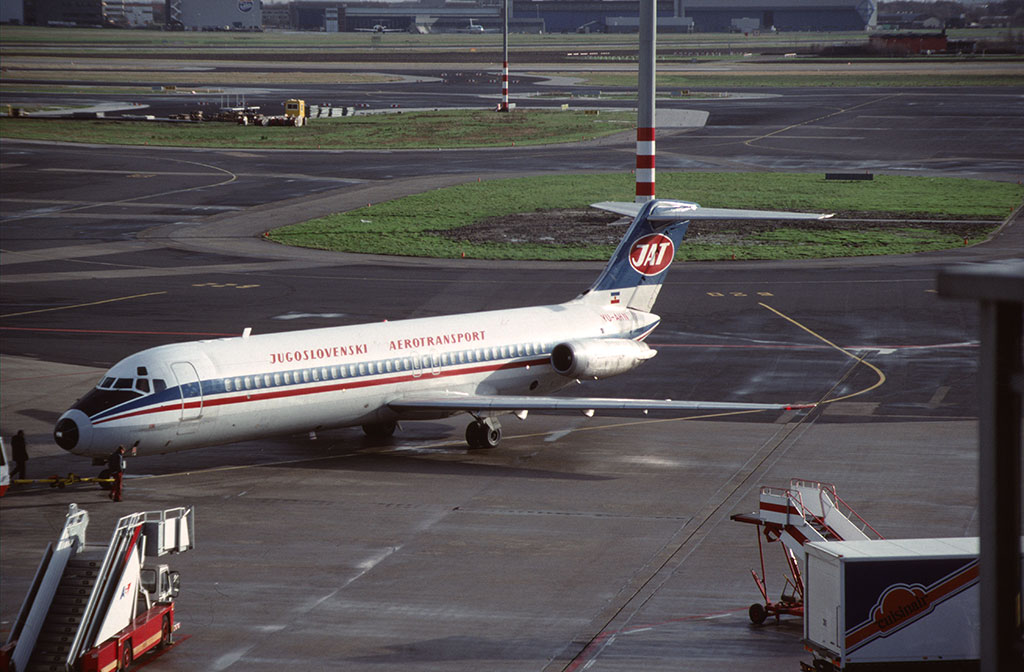
The former Yugoslavian national carrier, and later Serbia national airline, Jat Airways introduced the DC-9-32 as early as 1969 and kept it as a significant part of its fleet until replaced in 2005.
KLM Royal Dutch Airlines
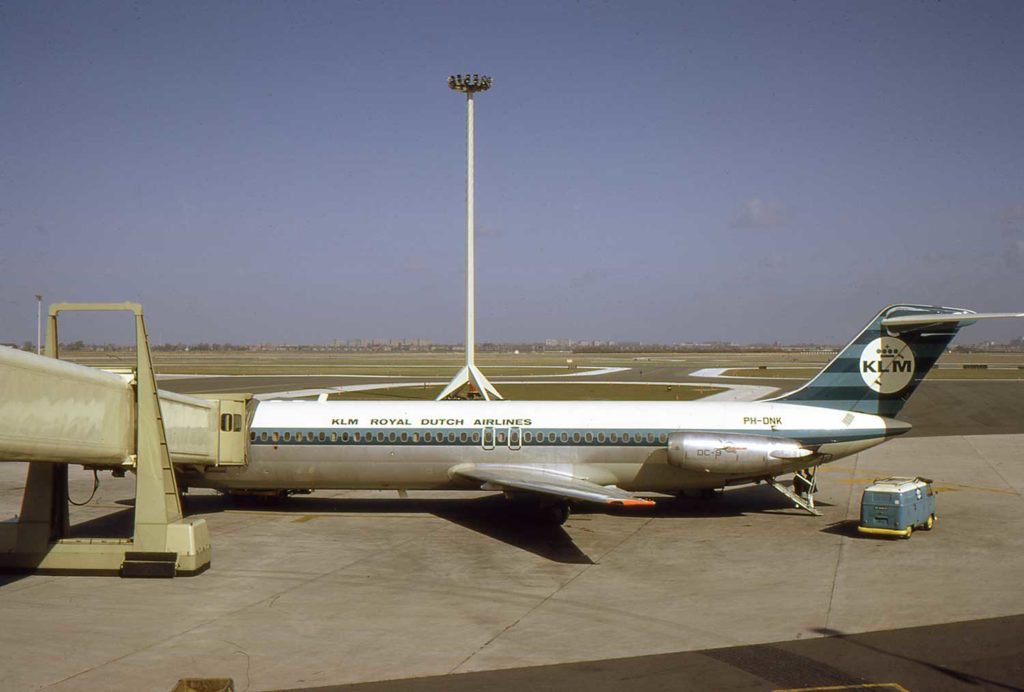
A long-time Douglas customer, KLM ordered the DC-9 in its early days. It flew the DC-9-10, -30 and -30C between 1966 and 1989 when it settled on a new Boeing 737 fleet.
Martinair Holland
Another Dutch carrier which used the DC-9 is Martinair. It flew four DC-9-30s with combination cargo/passenger configuration, giving them scope for a variety of flights.
MAT Macedonian Airlines
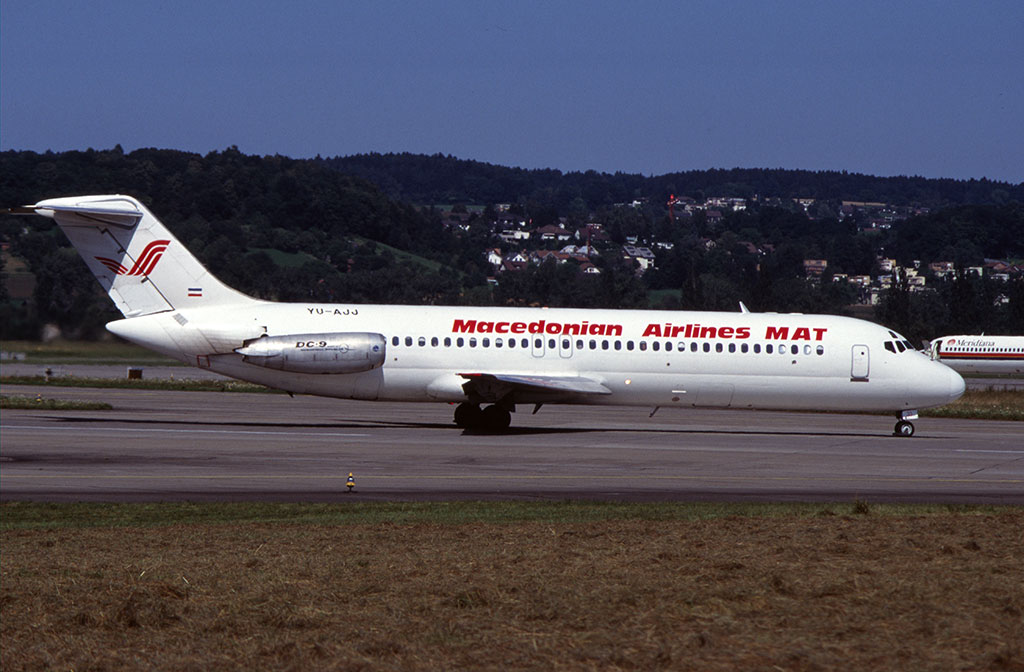
Following the demise of Yugoslavia, MAT became the national carrier of Macedonia in 1994. It lasted until 2009 and in that time, among many other types, operated three DC-9-30 variants.
Meridiana
Yet another Italian airline that flew the DC-9. Meridiana had six DC-9-51s between 1991-1999, alongside some MD-80s.
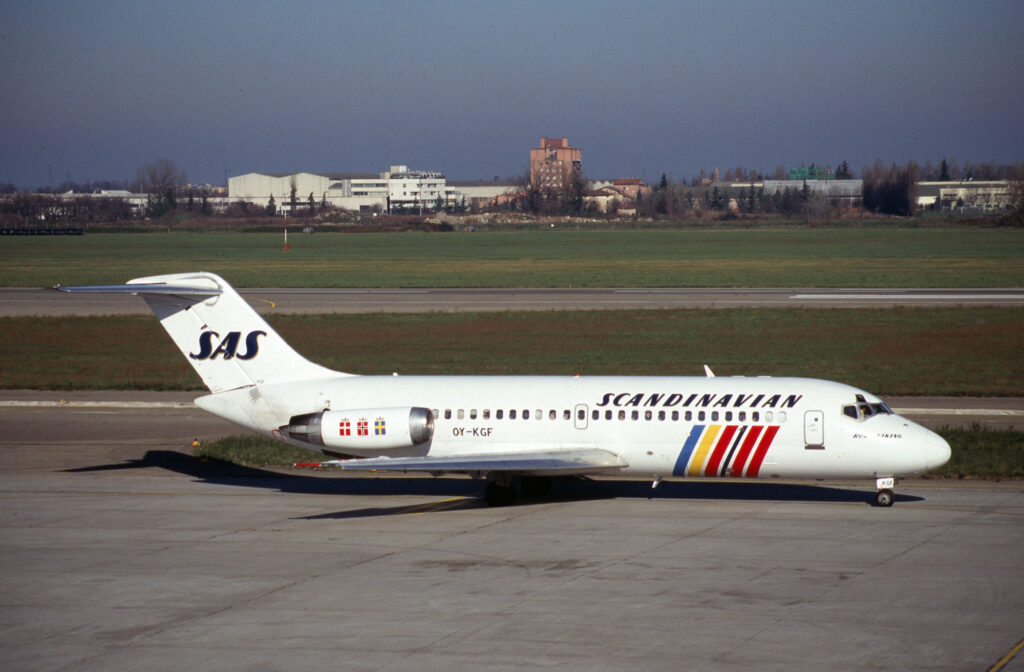
The DC-9-21 was designed specifically for SAS. It had the ability to operate from shorter runways, with better performance. SAS operated ten of them, alongside nearly 50 of the larger DC-9-41 model and two DC-9-32 freighters. It was also a major operator of the MD-80 series.
Spantax
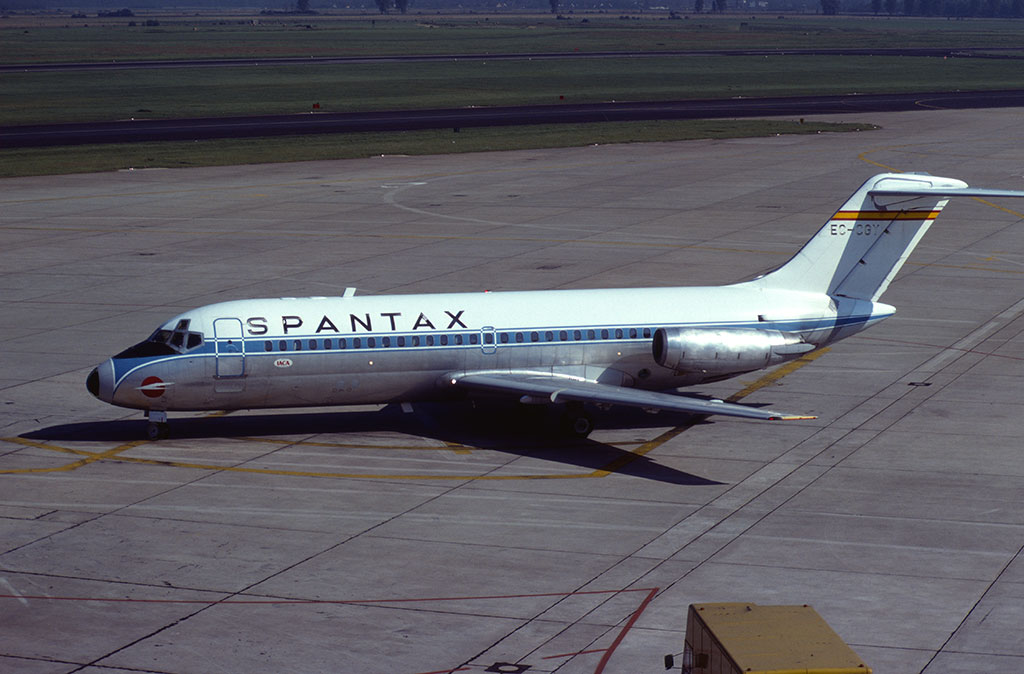
One of Spain’s earliest charter and tour operator airlines, Spantax existed from 1959 to 1988. In that time it flew an array of interesting aircraft types. Among them were two former Southern Airways DC-9-14s, acquired in 1974 for use on domestic and short-haul European flights.
Swissair
Swissair was an early adopter of the DC-9, acquiring their first examples in 1966. It flew five of the smaller DC-9-15s, 22 DC-9-32s, four DC-9-41s and 12 DC-9-51s on routes across Europe from its Geneva and Zurich hubs. They left the fleet by 1988, replaced by Fokker 100 and the MD-80 series.
Turkish Airlines
THY as it was then known, had a fleet of ten DC-9-30 aircraft which flew between 1968 and 1994 when replaced by more modern types like the Boeing 737. They were used on domestic, Middle East and European services.
Viva Air
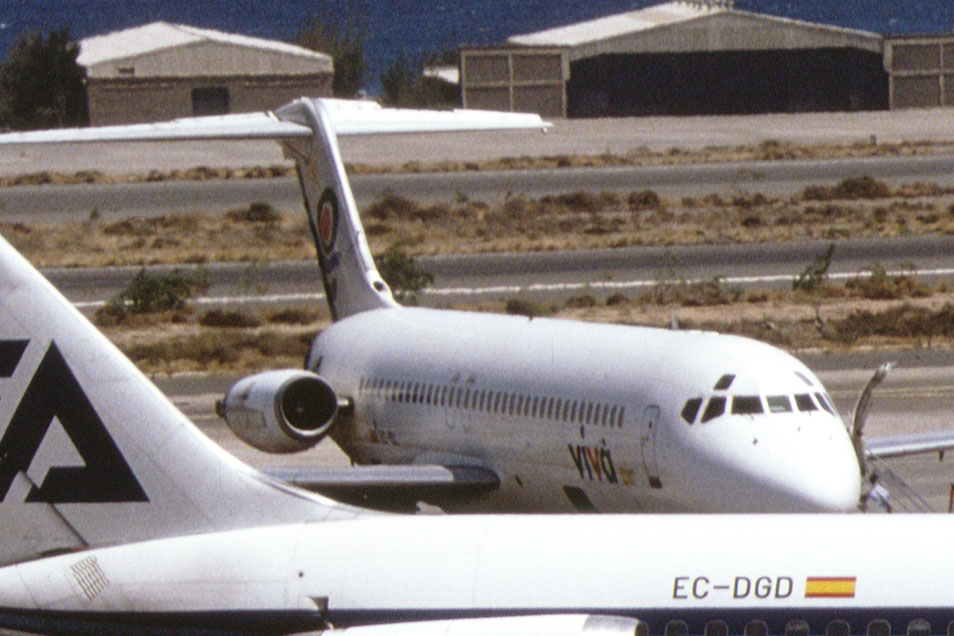
Viva, or Vuelos Internacionales de Vacaciones, was a Spanish leisure airline which existed from 1988 to 1999 and was mostly known for operating Boeing 737-300s. However, in its early days it flew three DC-9-30s on domestic routes.
Are Any DC-9s Still in Use?
The only known DC-9s still being used for regular passenger services are those operated by African Express Airways in Kenya.
There are also plenty of cargo variants flying, particularly in Mexico and the USA.
 Flying Firsts
Flying Firsts
For details on the Douglas DC-9 and all other airliner types and variants since the 1930s, get your copy of Flying Firsts today. Discover the first flights, histories, important facts and statistics about all of these aircraft types. The book is full of colour photography of all aircraft featured.


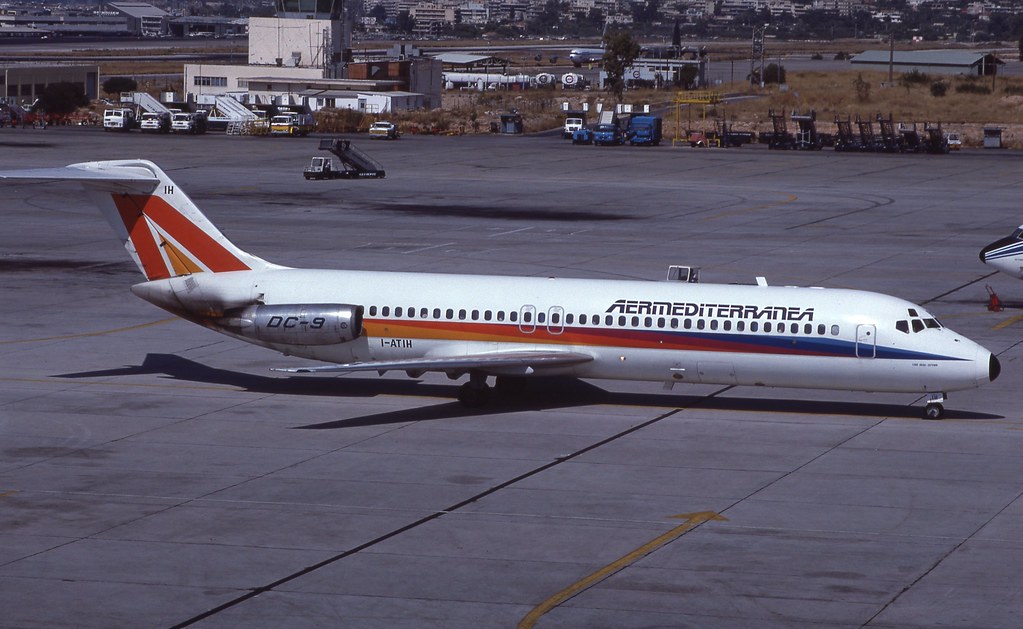


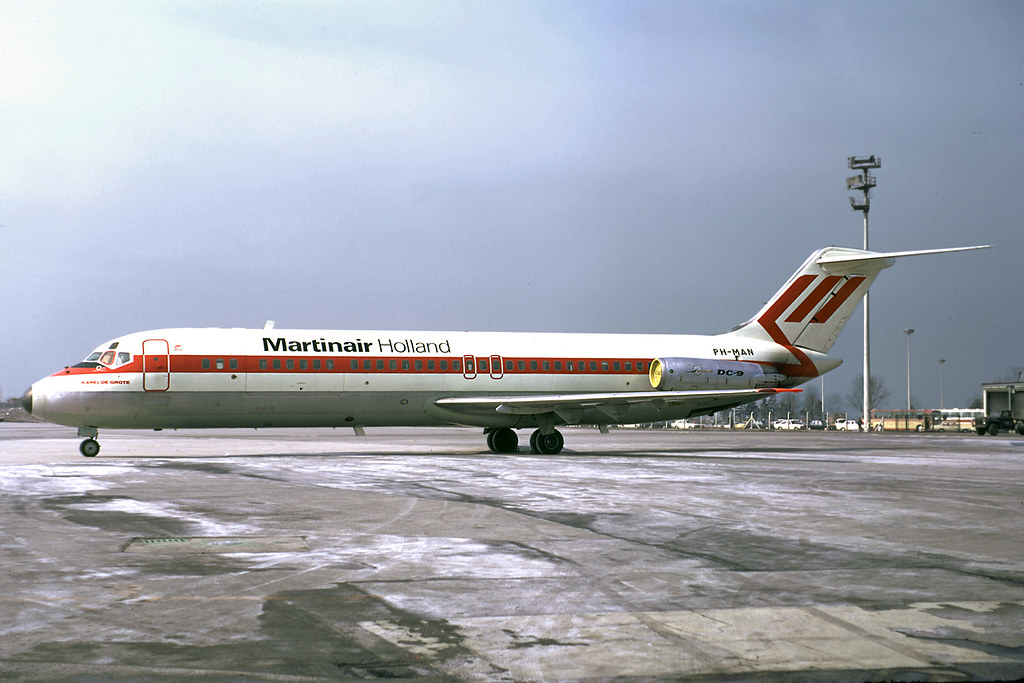
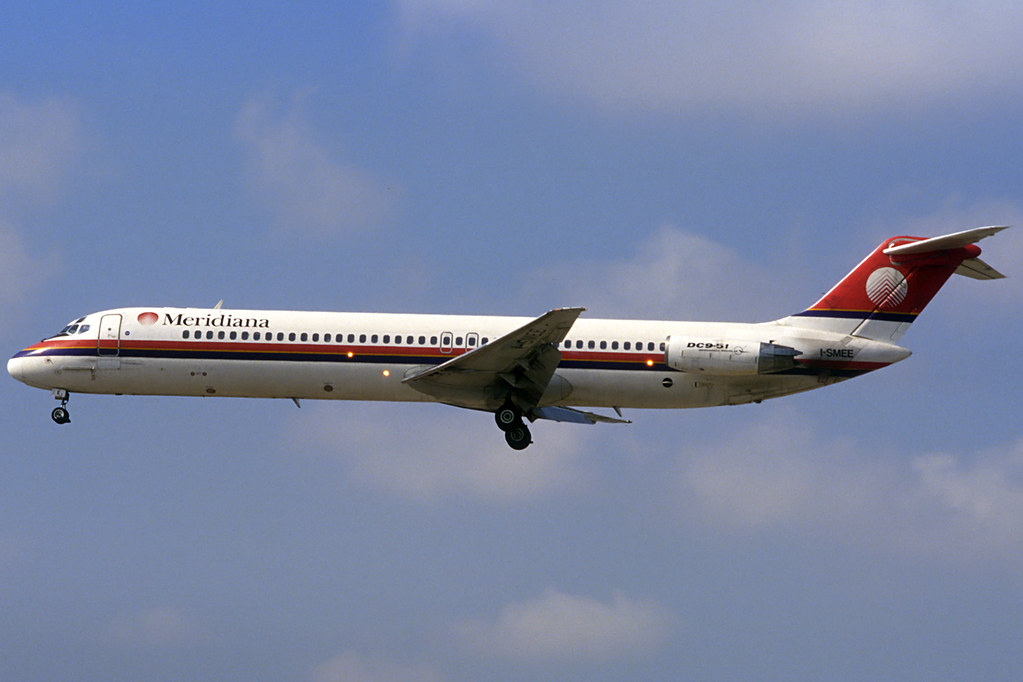
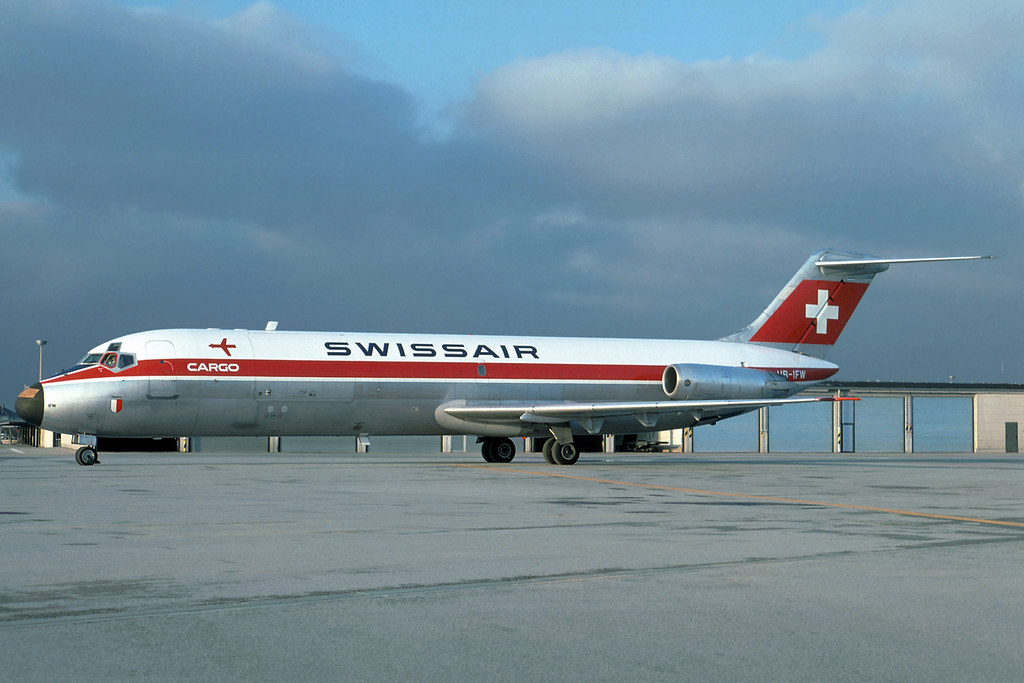

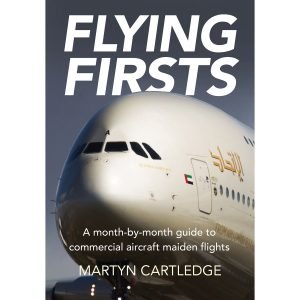



4 comments
Ah the DC-9, European ones I have flown on SAS, SWISSAIR, BMA and KLM plus many in Canada, USA and Australia,
Flown on series10/30/40/50 and the MD82 and 90 series. Great , if not a bit noisy, passenger aeroplane.
hello,
Can you please kindly remove the F/T/G+/P and other icons along the left side of each picture? It truly detracts form the
enjoyment. Also it would be nice if you could identify the airport where the pictures were taken.
Thank you.
Hi Norma, sorry these are spoiling your enjoyment. What type of device are you using to look at the site (laptop, mobile, iPad etc?). It is probably happening because your screen is too small. You could try rotating it or changing the screen resolution.
Thanks
Matt
some missed: Alisarda… Fortune… Noman…
the firsts I remember
to be honest military DC-9 should be included too — AMI at least